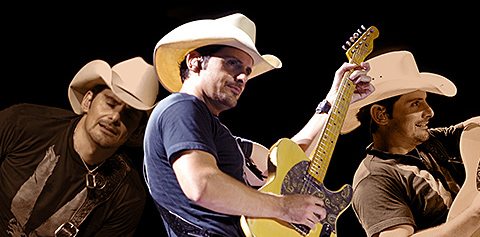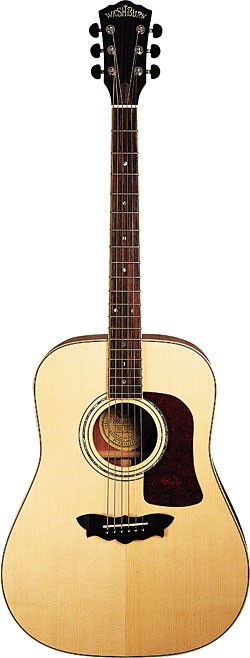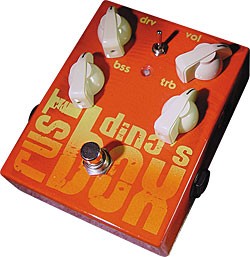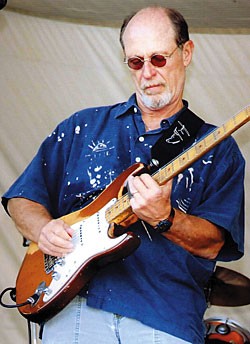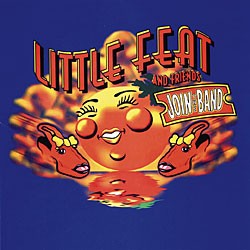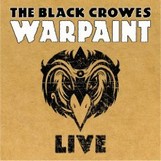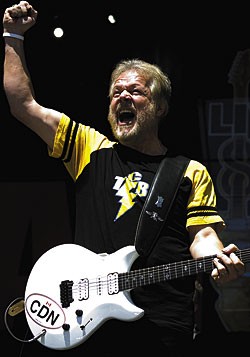
Ten years into what has become a stellar career, when Brad Paisley hits your town to play a show these days, it’s with nine semi tractor-trailer rigs and a fleet of buses. His five studio albums have all reached multi-platinum status and he has volleyed 12 songs into the #1 position on the country charts.
In a rare position as both hitmaker and, in the eyes of some, guardian of the latest neotraditionalist wave of country-music artists, Paisley says his new album, Play, serves a purpose beyond garnering hits. “I want it to be a pallet cleanser for my fans,” he said.
Country artists long ago left instrumental music in the scrap heap, but Paisley wants to revive it. Anything but your run-of-the-mill country mega-star album, the 15-track disc includes just four songs with vocals. And what’s more, in fulfilling the album’s mostly-instrumental mission, Paisley doesn’t simply steal licks from Chet Atkins and Albert Lee. Instead, influences surface ranging from Eric Johnson to Tal Farlow and Johnny Smith to Robben Ford – blues, jazz, bluegrass, surf, and instrumental rock – on Paisley’s most diverse record to date.
But of course, it wouldn’t be a Brad Paisley record without a large dose of country. In his nod to his Telecaster heroes, the listener gets the chance to hear what has to be the greatest gathering of Tele players in history. The tribute, “Cluster Pluck,” has James Burton, Albert Lee, Vince Gill, John Jorgenson, Redd Volkaert, Steve Wariner, Brent Mason, and Paisely taking turns. “Huckleberry Jam” is named after his son, William Huckleberry Paisley, born in 2007, while “Kim” is written for Huck’s mom (and Brad’s wife), actress Kimberly Williams-Paisley. His late mentor, Buck Owens, appears on the duet “Come On In,” showing he was no slouch on mandolin or dobro. And currently racing up the charts is his duet with fellow country git-slinger Keith Urban. “Start A Band,” tells the story of two young players getting advice on how to be cool. To paraphrase, get a guitar and some buddies, and start a band. The tune features humorous musical quotes from high-profile guitar gods Eric Clapton and Slash.
Paisley admits Play is a “selfish record,” but adds, “Hopefully, it makes some guitar players happy besides me.”
Have you been wanting to make this album for awhile?
I don’t know… It’s not like I’ve always dreamed of doing an instrumental album. I have been happy doing my normal country albums and still love doing those, really, the most. That’s what I got into this for – to write, play, sing – and do it on a record. But I had such a good time making my Christmas album last year – you don’t worry about how many units you’ll sell, you don’t worry about singles, and it’s not the kind of project that has to carry you through a couple years of your career. There’s something refreshing about that, and I think the idea for this came about due to that creative freedom I felt on the Christmas record. With an instrumental album, the expectations are not as high.
It’s also about time span; a regular country album for someone in my position is expected to carry you through an entire tour and several singles on the radio. In the best-case scenario, an instrumental album is more of a side project or labor of love. Those who enjoy it will get it, and then we’ll be on to the next album. It is a statement I wanted to make, and a creative process that really came about because of the Christmas record; we had a ball making that and we had a ball making this, and that’s what I was hoping it would be. A project where I would write the songs, put them on a CD and let people eventually buy it.
Was there an element of feeling you had something to prove, or was it more of being in a place in your career where you could?
I don’t know that I felt like I had anything to prove, because I don’t know that this album proves anything. There’s a lot of guitar playing on my regular albums and this album has more because there’s very little singing. But as far as risk taken, I don’t feel there were many risks that I don’t normally take. There are certainly styles of music that I can’t cover as convincingly or appropriately on my regular albums. I’m someone who limits myself on a regular record, making sure the things on it belong on the shelf labeled “country” in a music store. On this album I didn’t have those restrictions and we went heavily in other directions, playing stuff people haven’t ever heard me do.
On the other hand, in Tampa, a guy came up after a show and told me he had no idea I could play like that. And I’m thinking, “After almost 10 years of having a single on the charts at any given time, and I don’t know how many performances and albums – how long does it take to get people to realize that?” Maybe this will help connect the dots in a way no regular album can.
Country music tends to go in phases where Tele playing is more in-vogue, then out. Do you think Tele is out of favor right now?
That is certainly the case with a lot of what’s on the radio. Even my friends who are session players in Nashville will tell you there was a time in the late 1980s and early ’90s when you could show up to a gig and if you had a Tele with a Strat pickup in the middle you could pretty much cover anything they needed. In the early ’90s, Brent Mason could just show up with his Tele and have everything he’d need, tone-wise, though I’m sure he brought more guitars to the gig.
Does the current environment make you more focused on the Tele sound on your records?
Maybe. My ’68 Tele certainly started me on this path. It has a very unique sound. When we recorded the duet with Keith Urban, I originally was looking at using a ’52 or a new Crook. But my producer, Frank, asked that I use the Pink Paisley so I’d sound as much like me as possible. Whenever I play a duet, he asks that I use that guitar to make it as easy as possible for people to identify my playing.
Would you agree the definitive Brad Paisley sound is the ’68 Tele, an Aqua Puss delay, and your ’62 Vox Top Boost AC 30?
Yes. Until now, everything we’ve done have been attempts to improve or modify that sound. I don’t know if you can really improve on that, though, because it’s a great amp, great guitar, and a great pedal!
In regard to tone, do you ever feel you’re reaching new heights – or chasing your tail?
Well, that’s interesting. What really changes things is mics and mic placement. Sometimes I’ll hear, “That’s the best tone you’ve gotten,” or better yet, “I sure liked the tone you got better on your last record.” In many cases they’re talking about the exact same signal path. The difference is the way it was recorded, and the room we were in. So much of it is that.
When it comes to guitar sounds, the most important thing is the amp. The second most important is mic placement. The third is the guitar. You’ve got to have a great amp if you want to have a great sound, though mic’ing is almost equally important. You can put a bad mic on a great amp, and it’s not going to sound good, even if you also have a fantastic guitar. And of course you can’t “mic away” bad tone; a bad amp is going to sound like a bad amp.
But all of these are superseded by touch. The other guitar player in my band, Gary Hooker, has a completely different touch. If he picks up one of my guitars, it’s going to sound like Gary – it’s not going to sound anything like me. That’s what is so wonderful about players like Mark Knopfler, Chet Atkins, and John Jorgenson. It’s very interesting, how touch affects tone.
 1) Paisley’s road amps include a Dr. Z Stingray (on case), and other tone monsters like this (center stack, top to bottom) Trainwreck Liverpool 30, and two Z Wrecks, by Dr. Z, a.k.a. Mike Zaite, (right, from top) two Bruno Underground 30s, and a Bruno Cowtipper. 2) Brad Paisley’s wall of Dr. Z prop combos. His mic’d stage cabs are loaded with a variety of Celestion speakers. 3) Paisley’s primary Dr. Z Stingray amp. 4) The stompboxes in Paisley’s rig include (top row, from left) a Maxon AD999 Analog Delay, Way Huge Aqua Puss, a Voodoo Labs Pedal Power II. In the bottom (from left) are a Keeley Boss DD3 digital delay, Boss DD2 digital delay, Keeley-modded Ibanez Tube Screamer 808, Hermida Zen Drive, and a Visual Sounds Route 808. 5) The rackmount gear in Paisley’s rig includes a Furman Conditioner, Shure UR4D wireless receiver, Samson Synth 6 wireless (backup), Line 6 Filter Pro effects modeler, Line 6 Echo Pro delay modeler, Line 6 Mod Pro effects unit, Shure wireless mixer, Digital Music GCX switcher, Ebtech Hum Eliminator, and a Digital Music GCX switcher.
1) Paisley’s road amps include a Dr. Z Stingray (on case), and other tone monsters like this (center stack, top to bottom) Trainwreck Liverpool 30, and two Z Wrecks, by Dr. Z, a.k.a. Mike Zaite, (right, from top) two Bruno Underground 30s, and a Bruno Cowtipper. 2) Brad Paisley’s wall of Dr. Z prop combos. His mic’d stage cabs are loaded with a variety of Celestion speakers. 3) Paisley’s primary Dr. Z Stingray amp. 4) The stompboxes in Paisley’s rig include (top row, from left) a Maxon AD999 Analog Delay, Way Huge Aqua Puss, a Voodoo Labs Pedal Power II. In the bottom (from left) are a Keeley Boss DD3 digital delay, Boss DD2 digital delay, Keeley-modded Ibanez Tube Screamer 808, Hermida Zen Drive, and a Visual Sounds Route 808. 5) The rackmount gear in Paisley’s rig includes a Furman Conditioner, Shure UR4D wireless receiver, Samson Synth 6 wireless (backup), Line 6 Filter Pro effects modeler, Line 6 Echo Pro delay modeler, Line 6 Mod Pro effects unit, Shure wireless mixer, Digital Music GCX switcher, Ebtech Hum Eliminator, and a Digital Music GCX switcher.
Tell us about some of the incredible amps you’ve been using?
I never stop adding amps to my collection, and it’s certainly past the point of being excessive…
How many do you own?
I’m not even sure. We have at least 10 heads out on the road, and I have at least 10 more at home. That doesn’t include amps I have lying around, like that little Vox [points to the amp] or the Fender that James Burton gave me. And that’s also not including the amps in my music room, or those I’ve loaned out. Steve Wariner has one of my Dr. Z Maz 18s.
Live, I am still using a Z-Wreck by Dr. Z. It’s a great AC30-type amp based on the Trainwreck Liverpool 30. Dr. Z and Ken Fischer collaborated on it, and I can’t confirm this, but I believe it was the last amp Ken worked on. It’s a beautiful piece. I’ve also been using a Tony Bruno Cowtipper, which is based on a blackface Fender Twin but with a better-sounding reverb circuit. It’s a very clean amp I use for certain patches live in conjunction with a Vox-style amp. He also makes a great Vox-style amp called the Underground 30, which in my opinion is one of the great amps of our time. He modified one for me to have an old-style Vox transformer, and I have what you’d call a “standard” Underground 30. But that’s a bit of a misnomer in that there is really no such thing as a standard model for him. He tweaks each amp for the customer. I also have a Fender Vibro-King that I love that sometimes takes the place of the Cowtipper. [Mike Zaite at Dr. Z] is making a couple of interesting things, like the Evan, which is his take on a Fender-type amp. And then there’s my Trainwreck Liverpool 30 I took off the road for a while, even though it’s pampered out there – it’s treated basically like a person. It travels on a padded bunk on the bus! I pulled it out because I missed it. I use it for the distorted sounds live on songs like “She’s Everything,” and the high-gain stuff, plus the B.B. King duet we do live. It makes such a great blues amp because it’s so responsive. It’s hard to live without.
Do you use these same amps in the studio?
Yes, to a degree. We use the old red Vox by itself a lot, or with another amp. I used an Underground 30 with a three-knob reverb unit for the surf tune on Play. But a lot of things were just me plugged into either the Z-Wreck, the Bruno, or the Trainwreck. Those amps are so responsive you don’t want anything else in the signal chain – plug straight in. I used the Trainwreck plugged straight in for “Kim,” and another good example is on “Departure.” That’s that amp with one mic on it.
Can we assume that “Kim” was written for your wife.
(laughs) I did write it for her to sing, but she passed on it! So we’re shopping it to Kim Basinger and Kim Cattrall (laughs). It might just be one of those things were it needs to be shopped around a bit before Kim decides if she is interested. That happens a lot in Nashville. The surest way to get a song cut is to have some big artist put it on hold. Then everybody wants it. It’s like high school, where you find out some girl is dating someone, and you say, “She is? I should’ve asked her out.” It’s that kind of thing. I’m just kidding, of course.
At what point was it decided to have vocal cuts on the album?
This album was really not planned in any sort of way, it just happened. I just wanted to make a guitar-based album. I knew there would be instrumentals, but didn’t know we’d end up with some unique things like a duet with B.B. King or the tune with Buck Owens. It just slowly came about.
Speaking of Buck, talk about “Come On In.”
I had done a number of things with Buck before he died, but none really worked out. “Come On In,” though, worked as a duet and was a great platform for that Bakersfield guitar sound.
What did Buck play on it?
Mandolin and dobro, and he sang harmonies.
What guitar did you use?
That was the Crook Buckocaster. Bill Crook made two – one for me and one for Buck. And I was doing my best to play like Don Rich. That was the Z-Wreck and the Vibro-King together.
And how about on “Start A Band,” the duet with Keith Urban?
Well, Keith and I talked about whether we should do some kind of blistering guitar thing or an interesting vocal duet with guitar parts. When I heard the song – which was written by my friend, Kelly Loveless – I knew it would be neat to sing those lyrics, about how things can change your life in a major way, and the potential for the song to have harmony guitar parts was a major factor in the decision to record it. To me it has very much an Eagles feel, which made it a lot of fun.
What guitar did Keith play?
I believe he used a Les Paul Junior plugged into a Marshall and a Matchless combo. I used my ’68 Tele with the ’62 AC30 and Z-Wreck for the first half, and the second half is the Trainwreck and Z-Wreck together, to get a bit grittier. The song starts with my typical clean guitar sound.
“Cluster Pluck” is quite the homage to great Tele players. How did you pick the contributors.
As much as anything, I picked my top seven influences. My solo, which is the first extended solo in the song, is my tribute to every one of them. I have stolen so much from each.
Let’s go through them, and talk about their influence on you. First, James Burton.
James is who we all want to be. If you play a Tele in country music, whether you know who he is or not, you can’t help but be influenced by him. I think Don Rich wanted to be him! I know Albert Lee wanted to be James Burton, and Vince Gill wanted to be Albert Lee and James Burton (laughs!) All of us take the foundation he laid and build our own house on it. So, having James on this was very important for me.
Favorite Burton recording?
I think the Roy Orbison video A Black And White Night Live really showcases him playing his old paisley Tele, and you see all of the stars like Bruce Springsteen in awe of him. And of course I owe a huge debt of gratitude to James for making it cool to play a paisley Tele!
Albert Lee.
He took country guitar in the ’70s to a place it had never gone. He had such a unique style and sound. And of course you have to listen to Emmylou’s Luxury Liner and all the stuff he did with Eric Clapton and Ricky Skaggs. His influence on the next generation of country guitar players like Vince Gill and Steve Wariner is not to be taken lightly.
Vince Gill.
Vince will go down as one of the most important artists in country music. He’s already revered that way, and it’s not normal for someone to receive that kind of respect while they’re still living. But he has influenced me to no end. In the ’80s and ’90s he played a Tele when it was not cool. He created his own sound when everything in country music sounded so similar. I’ve learned all of his licks and played most of his songs while growing up and playing clubs. I feel very fortunate to call him a friend and hang out with him.
Redd Volkaert.
I first saw Redd in a club in Austin six or seven years ago. He made me want to practice in a way few people have. I’ve stolen so much from him it’s to the point to where if I am taking a solo and don’t know what to play, I ask myself, “What would Redd do?” That’s why he’s on the record.
John Jorgenson.
If I could be any Tele player in the world, it would be him. I’ve always loved his tone, his note choices, and of course the songs he played with The Desert Rose Band. John played through Vox amps before they were cool.
I’ve been told you treat him the way your fans treat you…
Of course! I have a photo of him on my phone playing my ’68 paisley Tele. To see him plug a guitar into an amp and watch him play blew my mind.
Steve Wariner.
Steve was the earliest influence upon me as a singer, writer, and player. I met him when I was 12, and what a gift it was that he was the first star I met. I was just learning to play, and saw him entertain an audience, talk between songs, sing his hits, and play the guitar solos. I had no idea anyone could play, sing, and write like that. He showed me that it was possible to do all three well. He also had a huge influence on me, personally. He’s the reason I try to always treat people with kindness because that’s the way he was with me. When I met him, I didn’t know what a country music star acted like. I was a blank slate. I think about what would have happened if I had met someone else. Maybe I would have wanted to be a hell-raising alcoholic coke addict (laughs)!
Last, but certainly not least, Brent Mason.
If you were playing clubs in the early ’90s in a country band, you were playing Brent Mason’s guitar parts… If you’re playing in a country band now, you’re playing his licks! He plays wonderful parts that at times are hard for a guitar teacher to explain to a student. He got away with playing very cool, musically sophisticated parts on popular songs. I’ve tried to follow suit.
Returning to Wariner, talk about “More Than Just This Song.”
What a sweet guy – and what an amazing tribute to my mentor, Hank Goddard, and Steve’s mentor, Chet Atkins. When I was a teenager, I got to play in Hank Goddard’s band. He was a wonderful combination of Hank Garland, Les Paul, and Chet Atkins. And Chet was Steve’s story. He toured as Chet’s bass player when he was a teenager. We both wanted to write this song as a tribute to the guys who live on through our playing.
 “When it comes to guitar sounds, the most important thing is the amp. The second [is] mic placement. The third is the guitar. But all [are] superseded by touch.”
“When it comes to guitar sounds, the most important thing is the amp. The second [is] mic placement. The third is the guitar. But all [are] superseded by touch.”
Your tone and playing are very different on this tune.
Yes, I played a Gibson Firebird that was Hank’s main guitar through the Bruno Cowtipper 90. Whenever I’d play something that sounded too much like me, I’d stop and re-do the part more in Hank’s style. Steve did the same thing with a Country Gentleman Chet had given him. One of the strangest, most miraculous things happened when we went into the studio to record this; I opened the guitar’s case and in it was the handout from his funeral; Hank passed away last year. When Steve saw this, he said, “You’re never going to believe this.” He opened his guitar case, and Chet’s obituary was sitting on the strings of his guitar, too.
Does the writing process change for a mostly instrumental project?
Absolutely. With this kind of project, I can walk into the studio with just a rough idea, as long as I had a basic melody. In the studio you decide to put a steel solo here, or repeat the head there… One big help was Frank Rogers, my producer. He’s not what I’d call a virtuoso guitar player, and that’s a very good thing. He is a great melody guy, and a great songwriter. Frank was good at keeping things in check. He would rein me in when something might be getting too complex. He stressed the importance that not everyone that might buy the record is a guitar teacher, so let’s make it more accessible.
Frank has produced all of your records. What does he bring them?
He’s the perfect producer. He understands art and he understands what it takes to make something commercially viable. That’s often overlooked on big-budget albums, but he’s able to approach things both from the indie record producer viewpoint, and look at things like a record executive. He is able to marry artistic expression, interesting instrumental sections, and song selection. He brings knowledge of harmony, tones, and could engineer an album himself if he had to. A producer’s job is as much about scheduling and logistics, and he handles all of those things well. He’s great at managing people.
Was Play a satisfying project?
Yes, I enjoyed every aspect – taking risks and doing things I’ve never done. The album is audio ginger, like when you eat sushi; between courses they give you ginger to clean your palate. It’s like hitting re-set on my recording career. I’ve made five big-budget country albums and a Christmas album, so this will be number seven. That’s five albums that have had four singles released on each that became hits. Now I have two options. The first was to take a breather and make a greatest hits record, which in my opinion is not viable due to the advent of [music downloading], which gives people the ability of people to make their own “greatest hits” record. The other option was to do a side project. And I got to do an artistic, somewhat selfish album, because it’s what I’ve always wanted to do. This gives us a six-month window for people to see this other side of me, and yet we have a very commercial single with Keith that I think people are excited about. This allows me to have a breather, then start making my regular country records with a clean slate. Although I think the lessons learned from this album will greatly change the way I make my next record.
How so?
In any artistic endeavor, you learn things. Like working with Keith Urban; I never would have come up with the licks he came up with in the choruses. Don’t be surprised to see him as a guitarist on a couple tracks on my next record. He is such a great player and guitar stylist. And then of course to sit in the room and watch John Jorgenson play… I’d love to have him come in and play on a track or two. You can bet this record will affect my next album.
Is “Les Is More” a tribute to Les Paul?
Yes, but also archtop jazz players like Tal Farlow and Johnny Smith.
Which big Gibson did you use to get that tone?
I used Frank’s early-’60s Byrdland with flatwound strings. I learned to play jazz when I was young, and always felt it would be important to know my way around the neck better than the typical country or rock player. Jazz is like going to driving school, as opposed to just passing the driving test.
Is that background responsible for you ability to play extended solos?
I think so. It’s a great way to get around the fretboard. The notes between the right notes are a lot of the things jazz will show you how to use. It’s about balance. A great jazz player is like watching a great prize fighter who’s real nimble, and you can’t seem to knock him down, at least not for long. Jazz players are always one slid note from the right one, and the art is in using that note well.
Did you learn about jazz from Hank Goddard?
Yes. He and others used to play all sorts of country-jazz instrumentals that had 13th chords in them and such – things you just don’t hear in popular music now. I think that’s something that is really missing in popular music.
Do you tend to think more about scales or chords?
I did learn my scales long ago, but when you’ve been playing for awhile it becomes intuitive. You sing through the guitar; your hand just starts to do what you want it to do.
How much did you practice as a child?
Quite a bit, but not as much as some others I know. I started playing gigs early, so it was always more on-the-gig “practicing” – for crowds of people, which I still do every night.
 A recent addition to the Paisley guitar collection, this ’53 Fender Telecaster was acquired from Hilda Fredericks, whose husband, Les, bought it second-hand in 1959. The guitar entered Paisley’s realm via Kendal Marcy, who plays keys and banjo in his band. Hilda is a lifelong friend of Marcy’s mother’s cousin; Kendal introduced her to Paisley at a January ’08 concert in Billings, Montana. Though Les had been offered a handsome sum for the guitar, he insisted that if he ever was to sell it, Paisley would get first crack. Les passed away unexpectedly in October, 2007, and the guitar made its debut in Paisley’s hands during the Billings performance, while Hilda looked on. You can hear it on the surf-inspired “Hang 101/2” from Play.
A recent addition to the Paisley guitar collection, this ’53 Fender Telecaster was acquired from Hilda Fredericks, whose husband, Les, bought it second-hand in 1959. The guitar entered Paisley’s realm via Kendal Marcy, who plays keys and banjo in his band. Hilda is a lifelong friend of Marcy’s mother’s cousin; Kendal introduced her to Paisley at a January ’08 concert in Billings, Montana. Though Les had been offered a handsome sum for the guitar, he insisted that if he ever was to sell it, Paisley would get first crack. Les passed away unexpectedly in October, 2007, and the guitar made its debut in Paisley’s hands during the Billings performance, while Hilda looked on. You can hear it on the surf-inspired “Hang 101/2” from Play.Do you practice at home?
Not very much.
Do you think about guitar playing?
All the time! I’m always looking for some new, unique thing to do. It’s mostly about writing songs, though. I’ll hear a song on the radio and think it would be fun to write something with a similar groove, and create a song around it. For me it’s about the words first, then finding the right melody to go around it.
Besides music, what inspires you?
Life in general. Sometimes the smaller and more insignificant event, the better the song. One of the things that drew me to country music was the way in which everyday life is addressed. My favorite country song is Dean Dillon’s “The Chair.” It starts with, “Well, excuse me, but I think you’ve got my chair.” It’s written in such a conversational way. I strive for that in my writing. I think about books like The Cider House Rules or The World According To Garp by John Irving; stories in which common everyday events have substance. The little details in those book make them feel like your own life. I want to do the same thing with my songs. I want people to be able to hear my songs and apply them to their lives.
What’s an example of that in your own writing?
“A Letter To Me.” It takes the idea of being able to write a letter to yourself at an earlier age, and looks at universal themes like your parents killing you if you fail algebra, or going out on a date, or a high-school bonfire. These things seem insignificant at the time, but can become very important later.
What statement are you making by having a gospel song on every one of your albums?
I try to have my albums reflect my life and who I am. Every record I make is kind of like getting a glimpse into a week in my life. You have the songs that are suited to Saturday night, and then you have the songs that relate to the grind of the work week. You have the ballads about love; it’s amazing what all goes on in a week. And then you have Sunday, and those songs, to me, are my Sundays. Country music owes so much to gospel music, and it’s such a big part of my life that I’d be making an incomplete record if I didn’t include a gospel song.
How much does your faith play a part in your life?
It plays a huge part. Having a son and a healthy family and getting to see things that seem like miracles to me. Of course, one man’s miracle is easily explainable to another, but I would be a very ungrateful person if I were to say that everything I have gotten has been because of luck – or worse, because of me. I have worked very hard to get where I am, but when I go into the studio with John Jorgenson or James Burton, I feel incredibly blessed. Some might say “Of course you get to do that. You’re so and so.” But to me, it’s a miracle.
Your career just hit the 10-year mark. How do feel about where you’re at, career-wise?
I couldn’t be happier. I love the shows we’re doing. I get away with a lot of things – musically and in terms of a performance!
Like what?
Like making an instrumental record! I shouldn’t be allowed to do this, but they’re letting me. I’ve never felt pressure to be anything other than what I am comfortable being. My record label chief, Joe Gallante, is a great partner. I wish I had a nickel for every time he said, “What feels right to you?” and let me go in that direction. Most people have asked how hard it was to make this album, and I tell them it was just a matter of saying, “I sure think it would be cool…” and Joe said, “That would be cool!” All I can ask is to be given a chance to express myself, artistically. I don’t know if guitar players are going to love it or not, but I had the opportunity.
A Tele and a Smile
For Chad Weaver, It’s All In A (Good) Day’s Work
As Brad Paisley’s guitar tech, Chad Weaver’s day begins at 8 a.m. when he’s awakened by the sound of riggers hoisting lights and winches lifting screens and speakers.
Weaver grew up in eastern Tennessee and spent as much time tearing into guitars as he did tearing them up. A garage-band player through high school, he moved to Nashville to attend Belmont University, and afterward spent time working in a music store back home, where his specialty was setup work. In that stint, he’d make the rounds at concerts, getting to know the road crews of various artists.
“It was through that I got my first road gig, as a guitar tech with Bryan White,” he recalled, and from there he went on to work for several top country artists. He arrived in Paisley’s camp in September, 2005.
Weaver’s day starts when he unloads Paisley’s guitars, amps, and racks from one of the nine 18-wheelers that transports the show.
“The first thing I do is get the guitars out so they can acclimate. That way if a neck is going to move, I have time to deal with it. Next thing I do is start stringing guitars.” Paisley uses two Fender Telecasters, four Crook guitars, and two Gibson J-45s. “Most get strung every day, unless it’s used for just one song, then I’ll let it go two shows,” Weaver says. The Teles and Crooks are strung with Ernie Ball coated Slinky sets, .010 to .046, except for the ’68 and ’52, which get the uncoated version. The Gibsons are strung with Ernie Ball coated .012 to .052 sets.
The J-45s are prototypes of a Paisley signature model with a Red Spruce top and 1942-style bracing. It’s assembled with hot hide glue and has a Fishman Aura preamp. Imaging comes via a Thuresson CM402 large-diaphragm condenser mic and LaChappelle 992 two-channel tube preamp and Millenia’s HV-3D preamp (the same setup Paisley uses in the studio).

After stringing all the guitars, Weaver looks to lunch. “But it never fails… As soon as catering is set up, it’s time to get my gear in position!” he laughs.
While crew assembles the stage, Weaver wires Paisely’s guitar rig. “The entire thing, except for speaker cabinets, is in my area offstage. This way I have complete access, so I can make any changes or – heaven forbid – a repair during the show.”
After everything is set, a line check is performed on all inputs. Paisely uses two GCX switchers for effects, both modified by Dave Friedman to include amp switching. “His guitar plugs straight into a Shure UR4D wireless, which feeds into the GCX units, which have an Aqua Puss analog delay, Boss DD-2, Keeley-mod Boss DD-3, Maxon AD 999, Keeley-mod TS-808, Zen Drive, and the Line 6 Echo Pro, Mod Pro, and Filter Pro rack units,” Weaver notes. “I also have a wah and a Visual Sound Route 808 overdrive pedal that only affects the Z-Wreck. We like to use the Trainwreck cranked, then the Z-Wreck with the Route 808 on it – we get a bigger sound having one amp with natural distortion and the other pushed by a pedal.”
The Z-Wreck has Celestion Gold speakers, while the Bruno Underground 30 has Celestion Blues, the Fender Vibro-King has one Fender speaker and two Jensen Neodymium-magnets, and the Trainwreck Liverpool 30, has a pair of Celestion G65 Heritage speakers. “All four are switched in and out during the show. We also have a couple of spares that sometimes get rotated in, such as a Dr. Z Evan, a Dr. Z Mazerati GT, and a Bruno Cowtipper.” After line check, Weaver continues cleaning and stringing until it’s time for soundcheck. “Brad and the band will play a song or two, and that’s when we decide if we want to change out an amp or pedal.” After soundcheck, Weaver takes care of last-minute adjustments and readies for the show. During Paisley’s performance, he swaps guitars onstage, and also manipulates effects and handles amp switching during the show. “The GCX and Ground Control allow me to change amp and effect selections on the fly,” he said. “Brad has an additional Ground Control onstage if he feels the need to make an unrehearsed change, but really it’s only there as a backup.”
So what makes for a good day in the life of Chad Weaver? “I live for a good show, one where my boss comes off stage, hands me his guitar, and has a smile on his face,” he said. After the show, he’ll usually have the entire rig back in its road case and on the truck within 45 minutes, ready to go the next day, when he’ll do it all over again.
This article originally appeared in VG January 2009 issue. All copyrights are by the author and Vintage Guitar magazine. Unauthorized replication or use is strictly prohibited.

